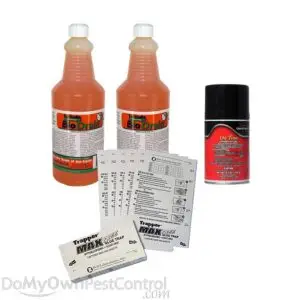How to get rid of sewer flies
Podcast: Play in new window | Download
Subscribe: Apple Podcasts | RSS
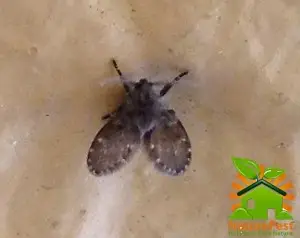
If you have flies in your sewer or drain pipes you most probably have Moth Flies, or Psychoda spp. Its scientific name. Moth flies are also called drain flies, some people call them drain gnats, because they are small little flies coming out of your drains in the floor or the bathtubs.
Because moth flies tend to live and bread in drains and may affect the health of human when present in large numbers also because the bodies of dead flies may disintegrate to form potential allergens. Moth flies are also nuisance pests because they land on people or fall into food. In sites where large numbers are present it can be very difficult to talk without swallowing them! Moth flies do not bite people or pets and do not cause damage to structures or plants.
Moth Fly Life Cycle
Understanding the breeding site and breeding requirements for moth flies is vital to achieving control as traditional chemical pesticide control methods are ineffective at controlling moth flies.
Like all true flies in the order of Diptera moth flies undergo a complete metamorphosis with egg, larval, pupal, and adult.
Female moth flies lay eggs in moist to nearly saturated organic matter like the gunk that builds up in your drain pipes including, sink, shower and floor drains. Hence the term drain flies.
Moth flies may also be found developing in wet animal feces, sewage and compost.
Once a moth fly lays eggs they will hatch in about 48 hours and continue to develop in the wet organic matter as larvae. The complete life cycle of moth flies can be in as little as eight days but can take as long as twenty four days depending on temperature.
Environmental Control Inspection and Prevention
The first and most important step to controlling moth flies is eliminating the breeding sites. The process of controlling them has to more with detective work than with chemical pesticides.
In residential homes or apartment building the most common place where moth flies breeds are in bathroom drains.
In commercial building such as restaurants common breeding sites include sinks and floor drains, grease traps, mop drying tubs, and evaporation pans underneath appliances.
If adults are found within a room you must examine all the drains within the room for the presence of moth fly larvae.
Moth flies are weak flyers therefore often adults can be found very near the breeding site. Presence of adults flyers within a drain or resting on walls near a drain is a clear sign that this drain is a breeding site.
A simple way to check if moth flies are breeding in your drains is to create a drain fly trap. To create a moth fly trap you will need a disposable paper or foam cup and some sticky coating such as petroleum jelly coat the inside of the cup and invert the cup to cover the drain opening. If any moth flies are in the drain pipe they will stick to the inside of the trap. The traps should be placed over all the drains and left in place for 24 hours.
While moth flies are most commonly found developing in the organic buildup within drains, they will breed in a wide range of wet organic debris that may be found in a residential or commercial structure.
If you inspected all drains and you did not find any moth flies to be developing in them, you need to check for additional locations that might contain wet organic material.
Moth flies can breed in elevator pits, around sump pumps, and in debris beneath leaking drain and sewage pipes. Pipes in crawlspaces, wall voids, and the underside of concrete slabs may need to be inspected for breaks or leaks.
Bare in mind that moth flies can sometimes disperse from other locations. Moth flies can often breed in very large numbers at sewage treatment facilities and dispersed through the air by wind to nearby homes and business where they will accumulate in large numbers, in these cases the moth flies are generally present in larger numbers outside than inside.
Moth Fly Control By Physical Methods
The physical control of moth flies is vital in eliminating them. Physical control methods will vary, depending on where the flies have originated.
If you find moth flies breeding within the home or other building, removing the larval habitat will generally provide control.
A common misconception most people make is that if you pour boiling water or bleach down a drain it will control moth flies, but this does not remove the organic material within the drains and at best provides short term control of moth flies.
In order remove the organic film within drains you may have to have them professionally power cleaned first to clear any blockage causing slow draining and also to prevent further buildup of organic material within the drain.
For sinks equipped with a J trap underneath, the trap should be removed and cleared of organic debris. After cleaning the drain, run water through the drain to ensure that water flows freely.
In order to remove and prevent the build up of sludge in drains the regular use of an enzymatic drain cleaner may help to prevent the buildup of organic debris that provides a good development site for moth flies. Similarly the removal of wet organic material followed by cleaning will eliminate breeding sites in exposed locations.
Moth flies produced at an offsite at sewage treatment facility is best managed through exclusion practices such as using door, window air vents with screens or the use of air curtains over doors in commercial facilities will prevent moth flies from entering the building.
Light is also a strong attractant for moth flies especially at night time where it can draw the flies toward the building. Consider relocating or the turning off of lights at night to reduce moth flies.
Chemical Control for Moth Flies
The use of chemical pesticides for the control of moth flies is considered unnecessary and pretty useless. If you don’t find the breeding site you will never get rid of them the breeding of moth flies has more to do with sanitation than with pesticides.
Bellow are some products that can be used in homes and business for the control of moth flies and all considered to be an environmentally friendly approach which for the fly it may be the only approach.
Bellow are the same products we use in our residential and commercial fly control programs, there are links to a supplier that offers free shipping with these products.
Professional Tools For Controlling House Flies
For interior home and office house fly control
Flyweb Fly Light
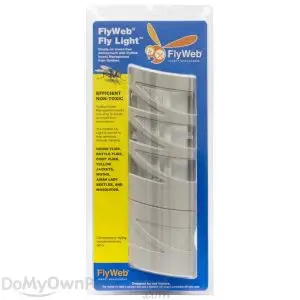
The FlyWeb fly light with a compact design insect light trap for indoors that plugs directly into a standard electrical outlet, bringing high-tech and effective fly control right to your home, office or restaurant. The FlyWeb lamp uses an insect attracting light to lure insects into a glue board that traps the unsuspecting pests. It uses replaceable and disposable glue boards. The FlyWeb fly light traps house flies, fruit flies, cluster flies, phorid flies, bottle flies, drain flies, mosquitoes, gnats and more. It measures 3.5″ wide x 11″ high and uses a standard 110V plug-in compatible with any outlet. Each flylight comes with a light bulb(s) and one glue board(s) already installed.
Genus Fly Lamps
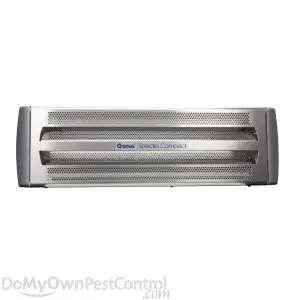
The Genus Spectra Compact is designed for high UVa output to optimise flying insect catch rates. Increasing customer awareness, has led to a demand for higher levels of hygiene and food safety. The Genus Spectra fly lamps feature uniquely positioned bulbs to maximize the UVa output and ensure flies head unobstructed, straight for the discreetly placed Universal Glue Board. Finished with an attractively and descrete design, hinged screen panel, Uses Universal Glue Boards, and replacement bulbs are the Vector Plasma 36 watt. Each flylight comes with a light bulb(s) and one glue board(s) already installed.
Cleaners to control moth fly breeding in drains
Invade Bio Cleaner
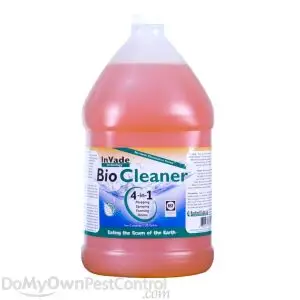
InVade Bio Cleaner is a new formulation of modern cleaning agents that does not contain any chemicals or odors. It is primarily used for mopping floors, foaming drain pipes to remove organic material that creates a food source for roaches, and filth flies, and spraying treatment. It is a premium natural, odor eliminating and waste digesting microbes product. InVade Bio Cleaner is safe to use in foamers, manual spray applicators, powers sprayers, mop and hose end sprayer applications. It can be used in a variety of areas like restrooms, public showers, grease traps collection pits, etc. The InVade Bio Cleaner works perfectly in cracks and crevices. It effectively eliminates organic build up and odors naturally. It is a 4-in-1 cleaning agent that does not leave any harmful chemicals and odors behind after cleaning so its perfect for commercial kitchens and other food preparation areas.
The Drain Fly Kit
The Drain Fly Kit with Invade Bio Drain Gel will treat up to 2 infested drains and includes On Time Insecticide Aerosol to control nuisance flies during the treatment process, and a pack of 12 Trapper MAX glue boards to monitor infested drains. On Time Aerosol will shoot out in quick misting spurts that will allow you to spot treat around sinks and drains and in open areas.

